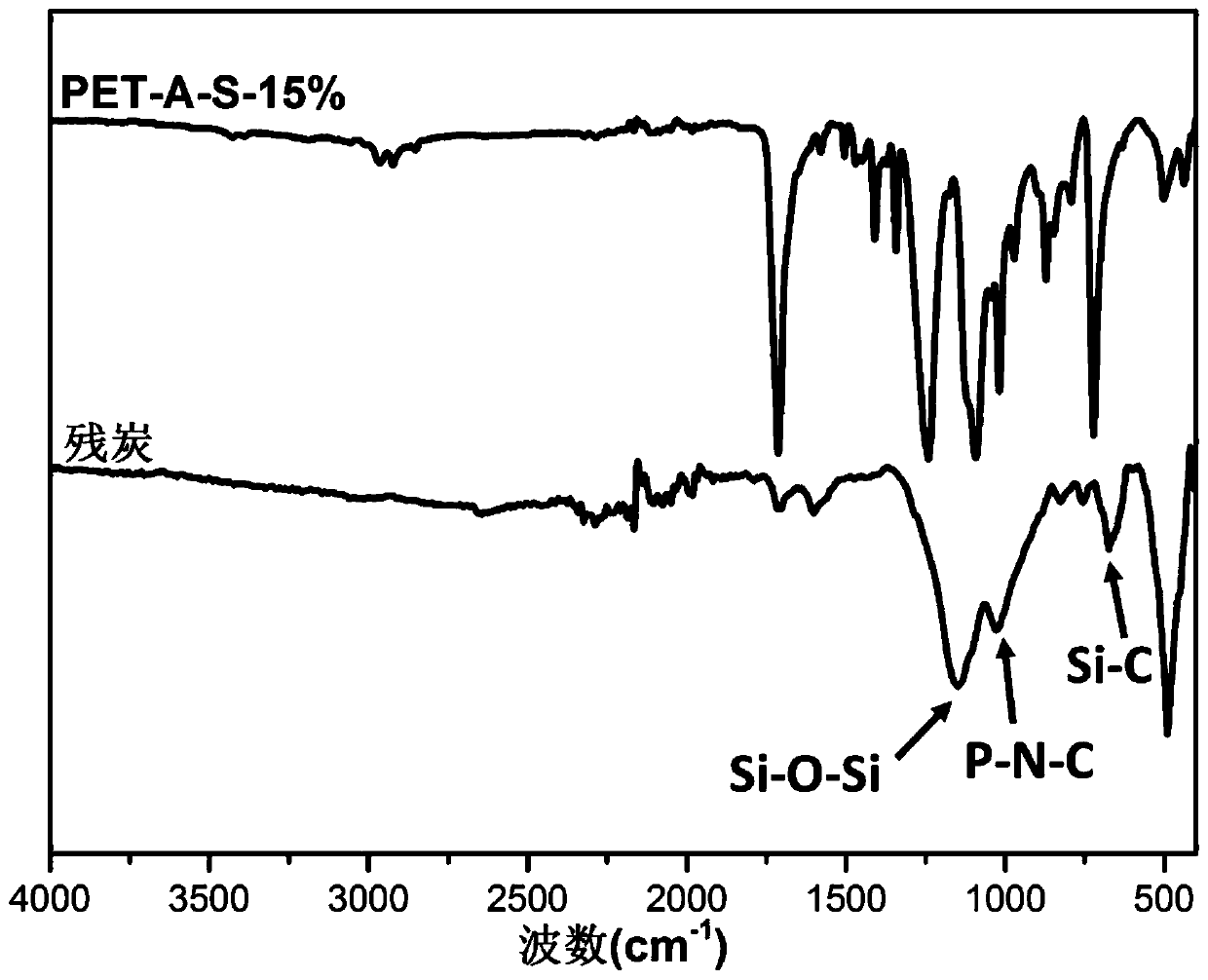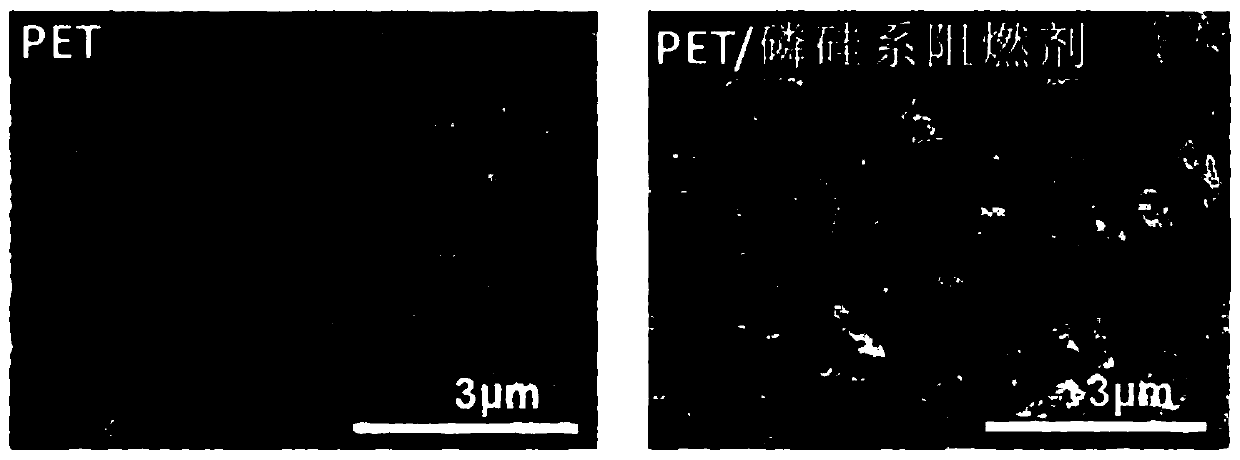Preparation method for flame-retardant anti-dripping polyester fiber
A polyester fiber and anti-droplet technology, which is applied in the manufacture of fire-resistant and flame-retardant filaments, melt spinning, fiber treatment, etc., can solve the problems of large addition amount and adverse effects on the performance of polyester materials, and achieve enhanced charring capacity, high limiting oxygen index, and the effect of reducing production costs
- Summary
- Abstract
- Description
- Claims
- Application Information
AI Technical Summary
Problems solved by technology
Method used
Image
Examples
Embodiment 1
[0024] A preparation method of flame-retardant and drip-resistant polyester fiber includes the following steps:
[0025] (1) Take 70 PET slices and place them in a forced-air drying oven, dry at 90°C for 2 hours, and then heat to 170°C and dry for 4 hours. Take 30 parts of hyperbranched polysiloxane coated ammonium polyphosphate flame retardant I (A-S) (chemical structural formula: ) Stir evenly with the PET chips, and then feed into the twin-screw extruder for melt blending. The temperature of each zone of the twin-screw extruder is: zone one 260℃, zone two 265℃, zone three 270℃, zone four 270℃, The fifth zone is 270°C, the main engine speed is 5.8rpm, the feeder speed is 4.7rpm, and the pelletizer cuts the extruded melt to prepare PET / AS masterbatch.
[0026] (2) Mix 20 parts of PET / A-S masterbatch and 80 parts of PET chips uniformly, place them in a blast drying oven, first dry at 90°C for 2 hours, then heat up to 170°C and then dry for 4 hours. After drying is completed, it i...
Embodiment 2
[0029] A preparation method of flame-retardant and drip-resistant polyester fiber includes the following steps:
[0030] 1) Take 70 PBT slices and place them in a blast drying oven, and dry them at 140°C for 5 hours. Take 30 parts of hyperbranched polysiloxane-coated ammonium polyphosphate flame retardant Ⅰ (AS) and PBT slices and mix them evenly. After mixing, they are fed into a twin-screw extruder for melting and blending. The temperature of each zone of the twin-screw extruder is as follows: Zone one is 245℃, zone two is 250℃, zone three is 250℃, zone four is 250℃, zone five is 250℃, main engine speed is 5.8rpm, feeder speed is 4.7rpm, and the pelletizer will extrude the melt Cut pellets to prepare PBT / AS masterbatch.
[0031] (2) Mix 20 parts of PBT / A-S masterbatch and 80 parts of PBT slices uniformly, place them in a blast drying box, and dry them at 140°C for 5 hours. After drying is completed, it is melted and extruded by a twin-screw extruder, and then enters the spinnin...
Embodiment 3
[0034] A preparation method of flame-retardant and drip-resistant polyester fiber includes the following steps:
[0035] 1) Take 70 PET slices and place them in a blast drying oven, first dry at 90°C for 2 hours, then heat up to 170°C and dry for 4 hours. Take 30 parts of hyperbranched polysiloxane coated ammonium polyphosphate flame retardant II (A-S) (chemical structural formula: ) Stir evenly with the PET chips, and then feed into the twin-screw extruder for melt blending. The temperature of each zone of the twin-screw extruder is: zone one 260℃, zone two 265℃, zone three 270℃, zone four 270℃, The fifth zone is 270°C, the main engine speed is 5.8rpm, the feeder speed is 4.7rpm, and the pelletizer cuts the extruded melt to prepare PET / AS masterbatch.
[0036] (2) Mix 30 parts of PET / A-S masterbatch and 70 parts of PET chips uniformly, place them in a blast drying oven, first dry at 90°C for 2h, then heat up to 170°C and then dry for 4h. After drying is completed, it is melted a...
PUM
| Property | Measurement | Unit |
|---|---|---|
| particle diameter | aaaaa | aaaaa |
| melting point | aaaaa | aaaaa |
| melting point | aaaaa | aaaaa |
Abstract
Description
Claims
Application Information
 Login to View More
Login to View More - R&D
- Intellectual Property
- Life Sciences
- Materials
- Tech Scout
- Unparalleled Data Quality
- Higher Quality Content
- 60% Fewer Hallucinations
Browse by: Latest US Patents, China's latest patents, Technical Efficacy Thesaurus, Application Domain, Technology Topic, Popular Technical Reports.
© 2025 PatSnap. All rights reserved.Legal|Privacy policy|Modern Slavery Act Transparency Statement|Sitemap|About US| Contact US: help@patsnap.com


